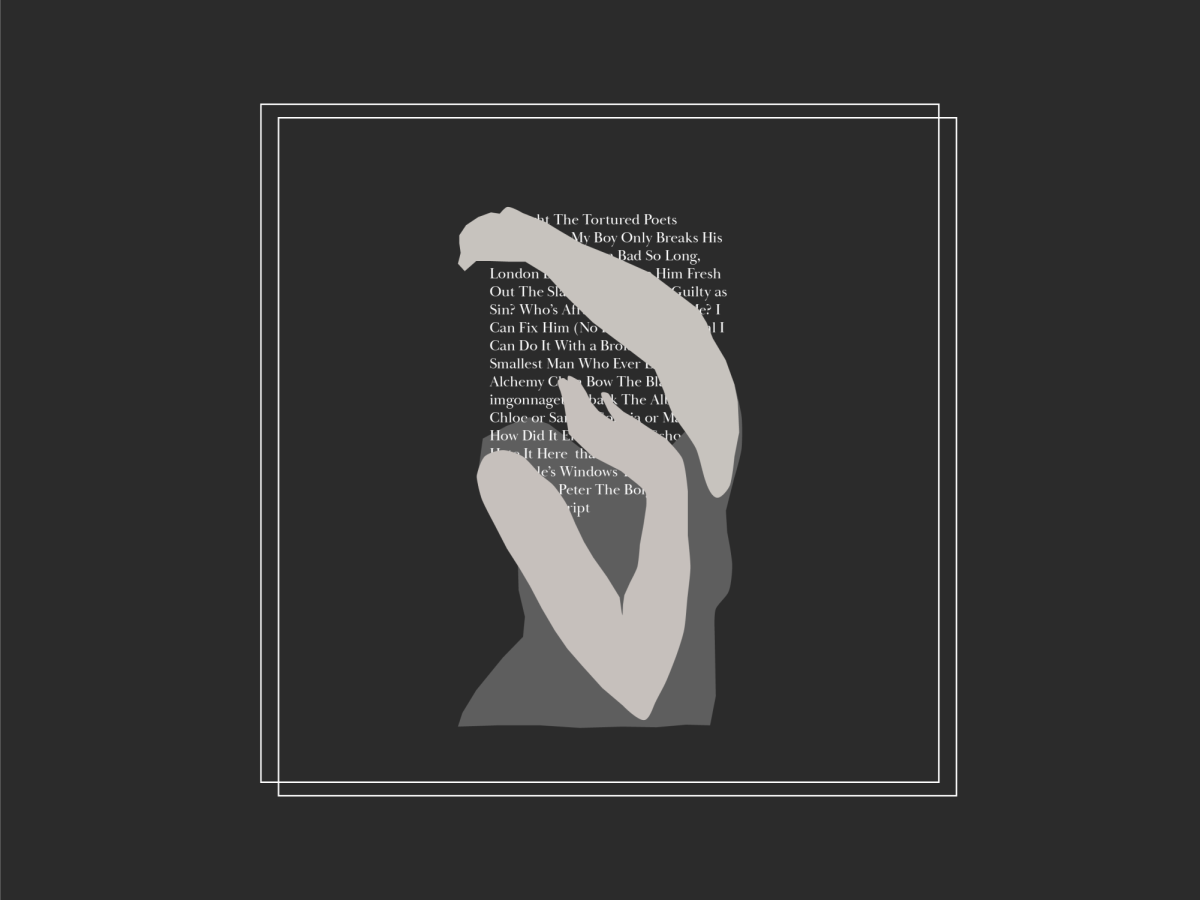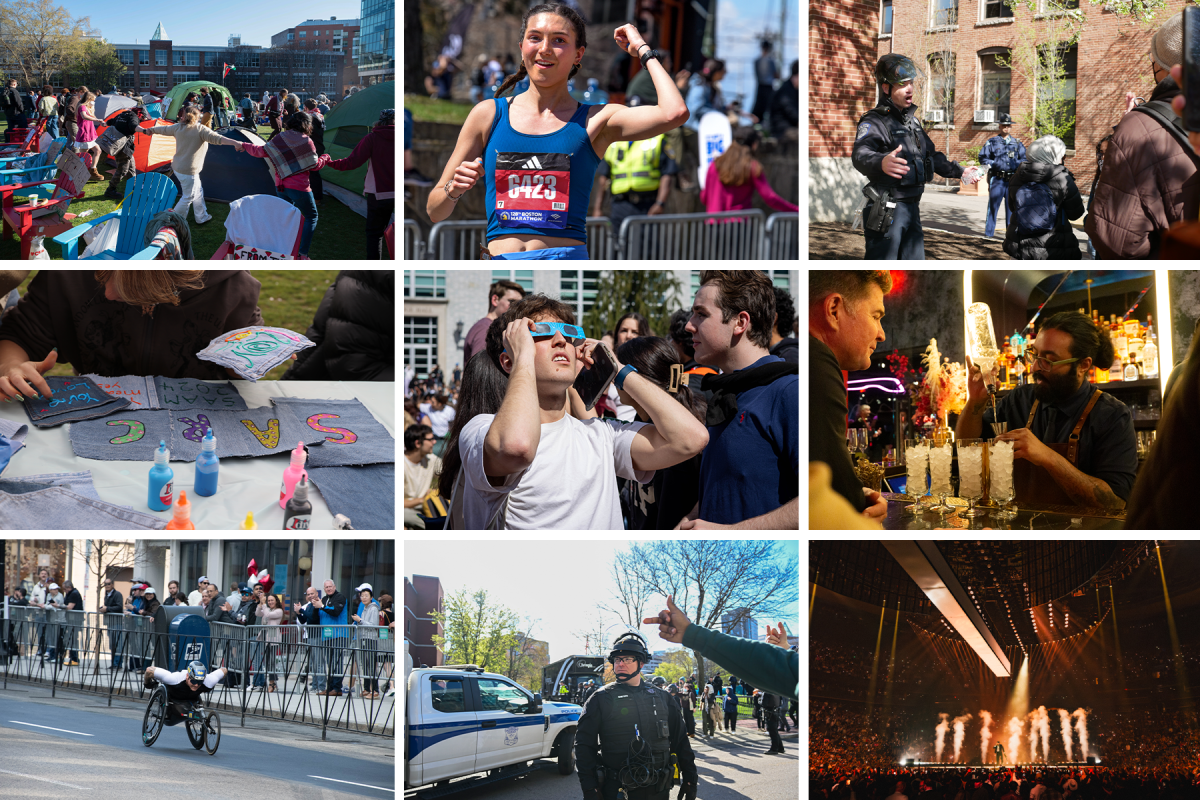By Jamie Ducharme, News Staff

Quilting, photography and wood don’t often come together as an art exhibit, but Northeastern’s Gallery 360 featured all three media in a showing that opened Friday and runs through June 4.
The exhibit is part of the English Graduate Student Association’s (EGSA) annual interdisciplinary conference. This year, the conference’s theme was “Memory Remains” and included a movie screening Friday and guest speakers and panels on Saturday and Sunday in addition to the Gallery 360 show.
“The theme of the exhibit and the theme of the conference are very much related,” said Lana Cook, an English Ph.D. candidate and the exhibit’s director. “What is memory? How do we kind of trace it out? How do we understand it, especially since memory is so transient and ethereal?”
Cook, who edits the online cultural journal The Orris, began coordinating an art exhibit in conjunction with the EGSA conference last year in an effort to increase exposure and marry English with art.
With that goal in mind, Cook and the EGSA put forth an open call for artists nationwide to submit art relating to their conception of memory and what it means. They eventually narrowed the field from 60 artists to seven. Among the artists whose work will be displayed is senior graphic design major Alexa Fay.
Fay said her portion of the exhibit, which features her photography set against actual entries from her journal, is a “diaristic confessional” aimed at conveying the ambiguity of memory.
“It was a reexamination of my memories,” she said. “You kind of realize how your perspective changes and you describe events differently. Memory is flux.”
Other works in the show include wood pieces portraying the history of cotton production and redistribution in the South by Brooklyn-based artist John Shorb and quilts projecting stories of African American history by artist Virginia Hernandez. A collection of watercolor paintings by School of the Museum of Fine Arts student, Molly Segal, depicts her grandmother’s battle with Alzheimers.
Cook noted that some artists visually interpreted the haziness of memory through watercolors and bleeding lines, while others were drawn more to the concept of a national memory or identity.
“Our selection really was about the trends or themes we’re seeing, and how are people dealing with memory?” Cook said. “What strategies are people using to define or shape this thing we call memory?”
As diverse as they may be, Cook said she hopes the pieces will come together to inspire reflection and thought in the viewer.
“I would love for people to go to that space and just think about memory and the remains that memory has,” she said. “Where does memory play into our sense of self, our sense of others, our sense of community?”
For Tabitha Clark, who presented a paper about memory and its visual elements at the Memory Remains conference and is a fourth year English Ph.D. candidate at Northeastern, that goal was accomplished.
“It was so interesting to see a wide span of how memory is interpreted,” she said. “I really like the Segal works. They really speak to the way memory fades away.”
Elena Trivelli, a Ph.D. candidate in media and communications at Goldsmiths College in London, presented a paper at the conference about the narratives in and around mental asylums. She said the description Cook wrote in a statement for the exhibit’s reception stuck with her most.
“I like the idea that we fill the gaps in memory with desires,” she said.
Bruce Ployer, co-chair of the Gallery 360 Advisory Committee, noted the exhibit’s intellectual qualities.
“I hope it will engage [viewers] and cause them to think and ask questions,” he said. “Any great piece of art should cause discussion, maybe be a bit controversial.”
Equally important, Cook said, is encouraging interdisciplinary consideration of memory by combining the academically-based conference with the abstractness of the art exhibition.
“[The conference is] all about bringing academia, the art world, the public into a common conversation,” she said. “We wanted to do that at the graduate student level and then especially share it with the wider community.”
Ployer also said he found the mix of academics and art very appealing when the committee voted on whether to show the exhibit.
“We don’t always get shows that are not only student-based, but also have such a strong academic component,” he said. “We’re thrilled to have the opportunity to host the show and we’ll look for similar types of shows in the future.”












